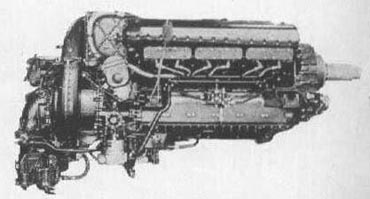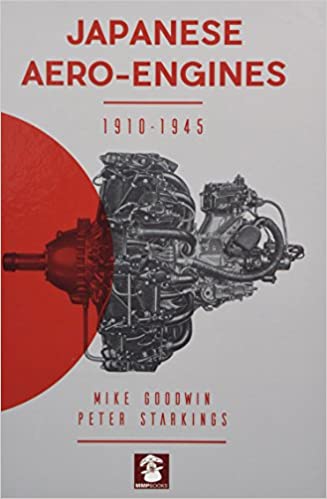
Design and development:
In June 1940, Henry Ford had offered to manufacture 1,000 aircraft a day if the Government would let him do it his way, and during a discussion with Secretary of the Treasury Henry Morgenthau Jr. regarding what the Ford company might produce, Ford's son Edsel tentatively agreed to make 6,000 Rolls-Royce liquid-cooled engines for Great Britain and 3,000 for the U.S. However, at the beginning of July, Henry Ford stated that he would manufacture only for defense, not for Britain, and the entire deal was declared off. Members of the Defense Advisory Commission subsequently began negotiations with other manufacturers in an effort to place the $130,000,000 Rolls-Royce order, and Packard Motor Car Company was eventually chosen because the engine's British parent company was impressed by its high-quality engineering. Agreement was reached in September 1940, and the first Packard-built engine, designated V-1650-1, ran in August 1941.
The first American version of the Merlin was the Packard Merlin 28 (Mark XX), designated the V-1650-1 by the American military. This engine used a single stage, two speed supercharger. As the Merlin 28, it was used for the Avro Lancaster bomber. The USAAF V-1650-1 version of this engine was used in the P-40Fs. The initial Packard modifications were done on this engine by changing the main crankshaft bearings from a copper lead alloy to a silver lead combination and featured indium plating. This had been developed by General Motors' Pontiac Division to prevent corrosion which was possible with lubricating oils that were used at that time. The bearing coating also improved break-in and load-carrying ability of the surface.
The real improvement Packard incorporated into the Merlin was adopting the Wright supercharger drive quill. This modification was designated the V-1650-3 and became known as the "high altitude" Merlin destined for the P-51. The two speed, two stage supercharger section of the -3 featured two separate impellers on the same shaft which were normally driven through a gear train at a ratio of 6.391:1. A hydraulic gear change arrangement of oil operated clutches could be engaged by an electric solenoid to increase this ratio to 8.095:1 in high speed blower position.
The high speed gear ratio of the impellers was not as high as the ratio used in the Allison, but impeller speed is not the only factor that determines engine performance, which is also a function of the size and pitch of the impeller blades. The gear-driven supercharger is a parasitic accessory, therefore impeller gearing and blade profiles are carefully designed for maximum power at altitude without compromise of available power at the critical take off stage of flight. The double staging of the compressed fuel/air mixture provided the boost pressure through a diffuser to the intake manifolds which increased the critical altitude of the power plant.
The ability of the supercharger to maintain a sea level atmosphere in the induction system to the cylinders allowed the Packard Merlin to develop more than 1,270 horsepower (950 kW) at altitudes beyond 30,000 feet (9,100 m). The two stage impeller created extreme heating of the fuel/air mixture during the compression process and to prevent dETOnation of the compressed charge, it was necessary to cool the mixture prior to entry into the cylinders. The cooling was accomplished in an intercooler passage cast into the wheel case housing between the first and second stage impellers.
Ethylene glycol coolant was circulated by a pump through this passage to carry off the excess heat generated by the impellers. Without the intercooler the temperature of the charge could be as high as 400 °F (204 °C). The intercooler in itself was not adequate to deal with the high temperature and an additional cooling fin and tube core was placed between the outlet of the blower and the induction manifold to the cylinders. This radiator was known as an aftercooler and served as a reservoir for the supercharger cooling system. The glycol mixture used for cooling was independent of the main engine cooling system and used a centrifugal pump driven by the engine to circulate the coolant through an aircraft radiator system at a maximum rate of 36 US gallons (136 litres, 30 Imperial gallons) per minute, depending on engine rpm.
This combined system reduced the charge temperature to suitable levels. The throttle valves in the updraft carburettor throat were controlled by an automatic boost control through the pilot's linkage to maintain the selected manifold pressure during changes in altitude. The valves were only partially open during ground and low level operation to prevent overboosting of the engine. As air density decreases with an increase in altitude, the throttle valves were moved to an open position by boost pressure corresponding to aircraft altitude. This system provided full power within engine boost limitations up to the critical altitude of 26,000 feet (7,900 m).
Specifications:
|
Type: Liquid-cooled V-12 piston engine Manufacturer: Packard First run: August 1941 |
Number built: 55,523 Developed from: Rolls-Royce Merlin |
|
General characteristics Type: 12-cylinder supercharged liquid- cooled 60° "Vee" piston aircraft engine Bore: 5.4 in (137.2 mm) Stroke: 6 in (152.4 mm) Displacement: 1,649 in³ (27.04 L) |
Length: 88.7 in (2,253 mm) Width: 30.8 in (781 mm) Height: 40 in (1016 mm) Dry weight: 1,645 lb (746 kg) |
Components
Valvetrain: Overhead camshaft-actuated, two intake and two exhaust valves per cylinder,
sodium-cooled exhaust valve stems
Supercharger: Two-speed two-stage, boost pressure automatically linked to the throttle,
water-air aftercooler installed between the second stage and the engine.
Fuel system: Twin-choke updraft carburettor with automatic mixture control
Fuel type: 100 Octane, from mid 1944 100/150 Grade Aviation fuel
Oil system: Dry sump with one pressure pump and two scavenge pumps.
Cooling system: 70% water and 30% ethylene glycol coolant mixture, pressurized.
Performance
Specific power: 0.95 hp/in³ (43.3 kW/L)
Compression ratio: 6:1
Power-to-weight ratio: 0.80 hp/lb (1.73 kW/kg) take-off; 1.21 hp/lb (2.69 kW/kg) 100/150
grade fuel/MS gear.
V-1650-1: 1,390 hp (1,040 kW); Based on Merlin 28, used in P-40 Kittyhawk and
Curtiss XP-60 fighters
V-1650-3: 1,280 hp (950 kW); Based on Merlin 63.
V-1650-5: 1,400 hp (1,000 kW); Experimental.
V-1650-7: 1,315 hp (981 kW); Similar to Merlin 66.
V-1650-9: 1,380 hp (1,030 kW); Water methanol injection.
V-1650-9A: 1,380 hp (1,030 kW);
V-1650-11: 1,380 hp (1,030 kW); Modified fuel system.
V-1650-21: 1,380 hp (1,030 kW); Opposite rotation for P-82 Twin Mustang
V-1650-23:
V-1650-25:
[Source - Wikipedia]





